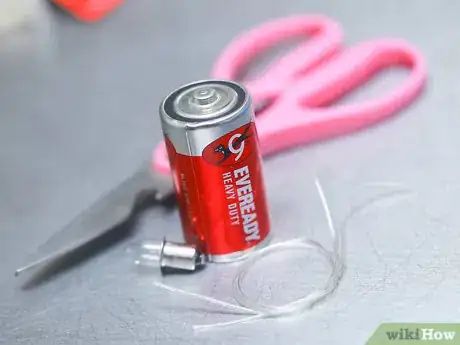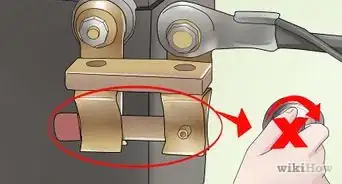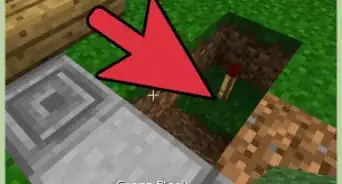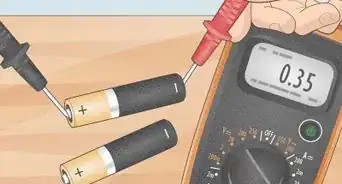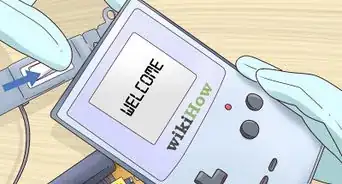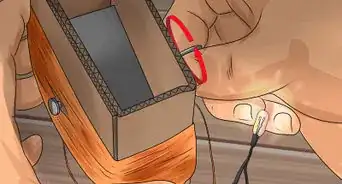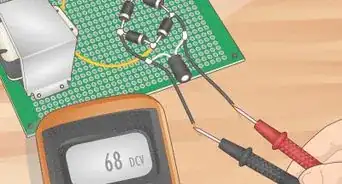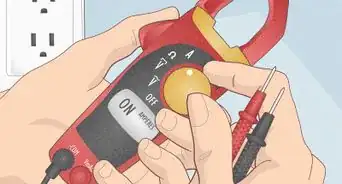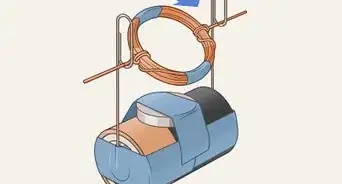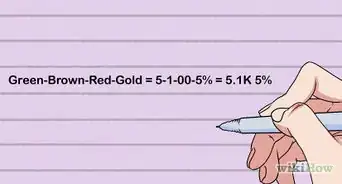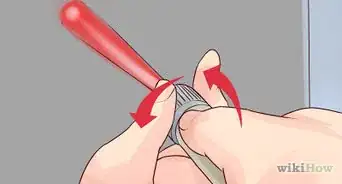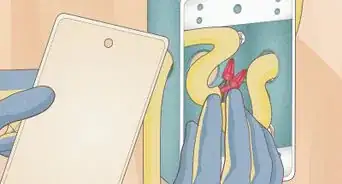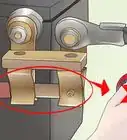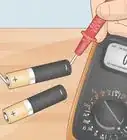This article was co-authored by Ralph Childers. Ralph Childers is a master electrician based in the Portland, Oregon area with over 30 years of conducting and teaching electrical work. Ralph received his B.S. in Electrical Engineering from the University of Louisiana at Lafayette and holds an Oregon Journeyman Electrical License as well as electrician licenses in Louisiana and Texas.
This article has been viewed 264,557 times.
Creating a light using batteries is quick and easy. It is a great way to make a handy flashlight, or just to get temporary light in a power outage. Correctly connecting your batteries and light creates a circuit that powers the light. Electrons flow out of the negative end of your battery, through the light, and then back into the positive side of your battery causing your light to stay lit.
Steps
Using a Standard Light Bulb
-
1Gather your supplies. You can use a light bulb or small light fixture for this. Also, electrical tape is preferred, but any other kind will work.[1]
- D battery
- Insulated wire cable (2 3” pieces)
- Light bulb
- Electrical tape
- Scissors
-
2Strip your wire. Using your scissors, strip 1/2” of insulation off of each end of your wire. Do this on both pieces of wire. Be careful not to cut through the wire.Advertisement
-
3Connect your wire and battery. Tape one end of your wire onto the negative side of your D battery.[2]
-
4Connect your light bulb. Now that you have a wire attached to your battery, take that same wire and touch the other end to the side of the bulb along the metal threading. Take the second piece of wire and touch it to the bottom metal tip of the bulb. Tape these pieces down so they don’t move around.
-
5Attach the other end. Take your second piece of cable (with the exposed end) and attach it to the other side of your battery. This should be the positive side of the battery. When you touch the wire to the surface of your battery, it should light up. This is because the electrons flow out of the negative terminal of your battery, through the bulb, and back into the positive side. This creates a circuit that causes the bulb to light up.[3]
Using LED Diode
-
1Gather your supplies. This flashlight is very easy to make and only uses a couple of things. Make sure to use AA batteries, because any higher voltage will cause the wires to get hot very quickly and your flashlight will be dangerous.
- Insulated wire cable (1” and 3”)
- 2 AA batteries
- LED diode
- Electrical tape
- Scissors
- Paper sheet
-
2Tape batteries together. Line up your 2 AA batteries so that the positive end of one is attached to the negative end of the other. Using your electrical tape, connect the batteries. Make sure that the connection is strong so that you don't have to push the batteries together with your hands to create the charge.
-
3Expose the wire. Using your scissors, cut the insulation away from the ends of your electric cable. This will expose the wire. Be careful not to cut through the wire. Do this to both pieces of cable.
-
4Attach your cable to the LED diode. Using the smaller piece of cable, wrap the wire tightly around the one side of your LEO diode. Do the same with the larger piece of cable on the other side. Tape these together.[4]
-
5Test your light. Using the shorter cable, place the exposed wire onto the negative side of the battery. While holding the wire directly on the battery, place the exposed wire from the longer cable onto the positive side of the battery.
- If your LEO diode doesn't light up, switch the cables so that the shorter one is on the positive side and the longer one is on the negative side.
-
6Fray the wire. Once you've discovered which charge your shorter wire needs to attach to, fray the end of it and tape it to the proper side of the battery. Fraying the wire will ensure connection because it will cover more surface area of the battery.
-
7Wrap your batteries. Cut your paper sheet down to the length of your batteries. Roll the sheet over them (keeping the wires inside) to form a small flashlight. Your longer wire shouldn't be taped down yet. Tape the paper over your batteries with the light at one end and the end of the longer wire and exposed side of the battery on the other.[5]
-
8Use your finger as a switch. Now, you can hold the end of the wire on the exposed side of the battery. This will cause your light to turn on. You can either hold it, or you can tape it down to keep the light on.
References
About This Article
If you want to make a light using batteries, start by stripping 1-2 inches off of both ends of 2 pieces of wire. Then, use electrical tape to attach a piece of wire to the negative end of the battery and the other end to the lightbulb. Tape the second piece of wire to the bulb, then finish by connecting the other end of the wire to the positive side of the battery to make the bulb light up. To learn how to make a light using a LED diode, keep reading!
